
| What is Flavor and Fortune? |
| How do I subscribe? |
| How do I get past issues? |
| How do I advertise? |
| How do I contact the editor? |
Read 12618284 times
Connect me to:
| Home |
| Articles |
| Book reviews |
| Letters to the Editor |
| Newmans News and Notes |
| Recipes |
| Restaurant reviews |
| Article Index (all years, slow) |
| List of Article Years |
| Article Index (2025) |
| Article Index (last 2 years) |
| Things others say |
| Related Links |
| Log In... |
| Authors |
| Categories & Topics |
Dongbei Cookery and Recipe Delights
| by Jacqueline M. Newman |
Chinese Food in China, Hong Kong, and/or Taiwan
Summer Volume: 2007 Issue: 14(2) page(s): 8, 9, and 24
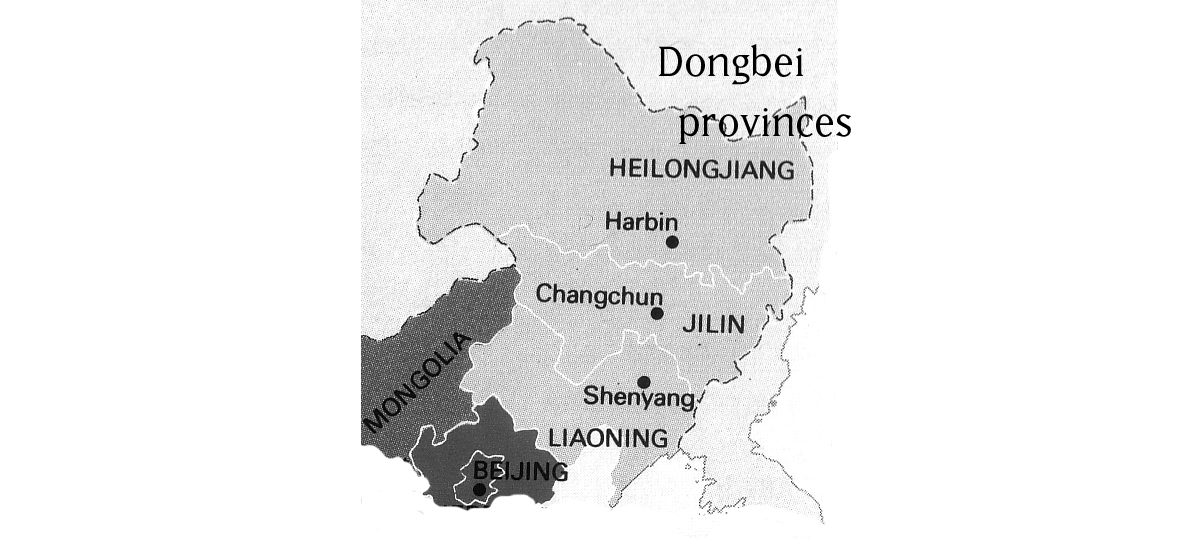 Many may not realize that they have considerable familiarity with the region called Dongbei. They may know it as Manchuria. That matches calling Guangzho by its older name of Canton. Foods and places do change names. The kiwi was a Chinese gooseberry; the Chinese still call it a ji wei. The Chinese wolfberry, also known as a medlar fruit, is now known as the goji fruit; the Chinese have always called these red fruits go ji. There are other names used that have not kept up with the times; take Pekin or Peking, which is now correctly spelled Beijing.
Many may not realize that they have considerable familiarity with the region called Dongbei. They may know it as Manchuria. That matches calling Guangzho by its older name of Canton. Foods and places do change names. The kiwi was a Chinese gooseberry; the Chinese still call it a ji wei. The Chinese wolfberry, also known as a medlar fruit, is now known as the goji fruit; the Chinese have always called these red fruits go ji. There are other names used that have not kept up with the times; take Pekin or Peking, which is now correctly spelled Beijing.
Times certainly can change the way we refer to things. This East-North area, a literal translation of Dongbei, is no longer thought of nor is it called Manchuria. Then and now Dongbei always had three provinces: Liaoning, Jilin, and Heilongjiang. They are illustrated on the map on this page.
These three political jurisdictions, now home to more than one hundred million people, was once considered the territory of the Manchu. During the Qing Dynasty (1644 - 1911) some called these imperial times, the Manchu Dynasty. In earlier times, Chinese Han peoples were prohibited from moving into and/or living in this region; that is until the Taiping Rebellion (1850 - 1864 CE). After that, the local government of the Manchu relented.
The capital of Liaoning province is Shenyang. It is five hundred twenty miles from Beijing and has a population of about five million. This city is an important meeting point of several transportation routes and an important industrial city. It is also the city with the most complete and the best preserved Imperial Palace second only to the one in Beijing. Other important things about this provincial capital is that it is fifty miles north of Anshan, a city with the largest steel works in China. The southern most city in this province is Dalian. It is at the southern tip of the peninsula, and is north and just across the sea from the Shandong Province. Dalian is important for many reasons, one being it is further south than Beijing, and so is a year-long ice-free port city.
Another province, Jilin, is northwest of Liaoning. It is home to about twenty-four million people. Its capital, Changchun, is the terminus of the Manchurian railway. This city has a large university and lots of important industries; and it is the place that makes many, perhaps most of China’s automobiles. East of Dalian is Tonghua, a wine-producing town not too far from the Korean border.
The third and northernmost province is Heilongjiang. It is home to almost thirty-five million people and is more than eight hundred fifty miles north of Beijing. Near its southern border is its capital city of Harbin. It is a city where more than three million people call it home. What stands out about this city are its seventeen Christian churches built in neo-Gothic style. This capital city is best known, among other things, for its ice-sailing and for the huge buildings made each year out of ice.
Now, these three provinces are home to many Han and to quite a few non-Chinese peoples. Together, they produce more than one-third of China's heavy machinery, half its coal and oil resources, and they make most of its military equipment. Even with all of this action, foods here do not enjoy the reputation of others among China's major cuisines. But here, the Imperial cuisine of China’s emperors is the regional approach used for cooking. There are many royal methods and flavors in use. What the Dongbei region lacks in culinary sophistication, it makes up for in variety.
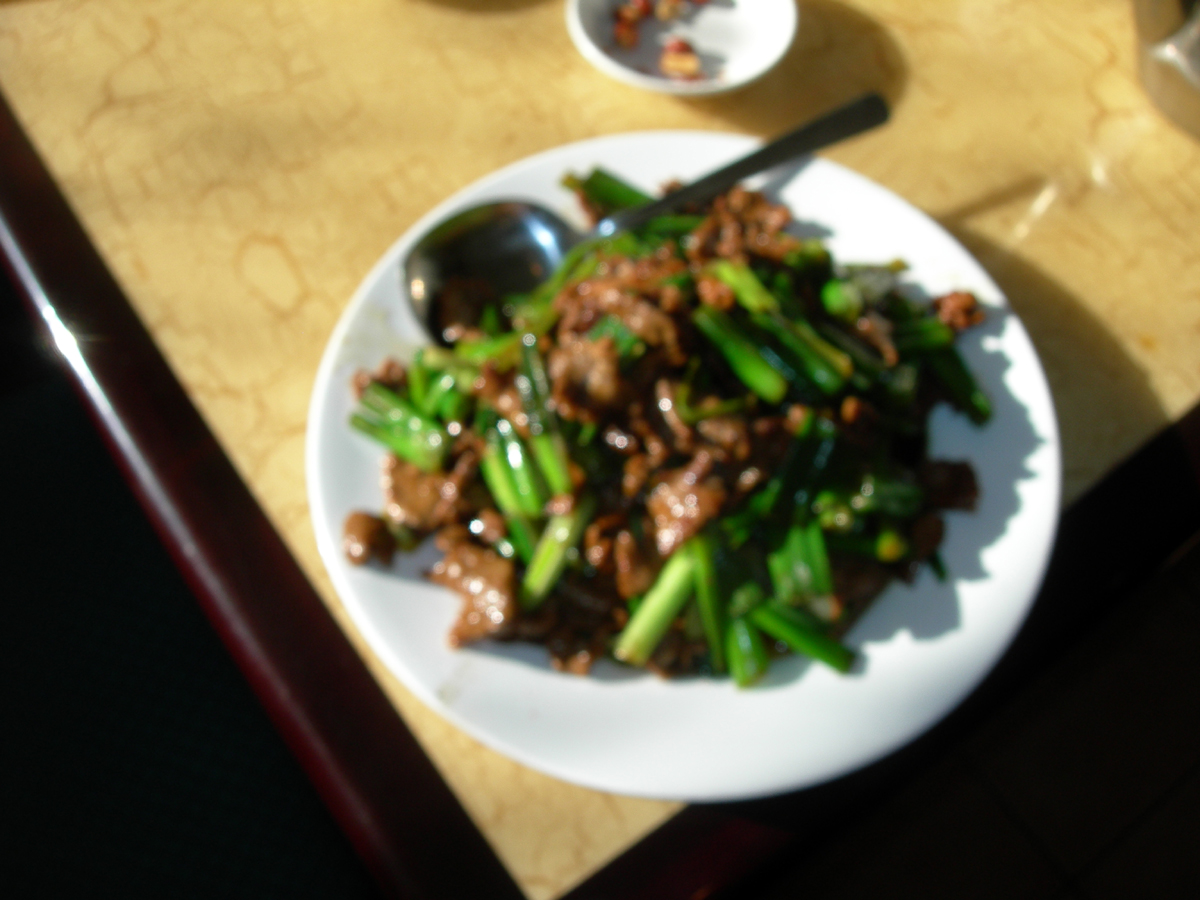 Some say this East-North region's cookery is plain but useful. Others disagree and find the food oily, rich, and very flavorful. They believe the ingredients and dishes are fresh and delicious. Cookery in Dongbei includes many stews and casseroles and other dishes loaded with sauce. Duck and other poultry are commonplace. They are often grilled over fires made hot with wood, then sauce is poured over them.
Some say this East-North region's cookery is plain but useful. Others disagree and find the food oily, rich, and very flavorful. They believe the ingredients and dishes are fresh and delicious. Cookery in Dongbei includes many stews and casseroles and other dishes loaded with sauce. Duck and other poultry are commonplace. They are often grilled over fires made hot with wood, then sauce is poured over them.
There are many outside culinary influences in Dongbei cuisine. They include those of the Manchu and Mongolians, the Han, Korean, Japanese, and Russian; and others from minority populations that have traveled northern Silk routes. These include but are not limited to the foods of the Uighurs and the Turks. There are also foods of peoples coming from the two thousand four hundred eighty border miles that have, over time, exerted influences on Dongbei foods.
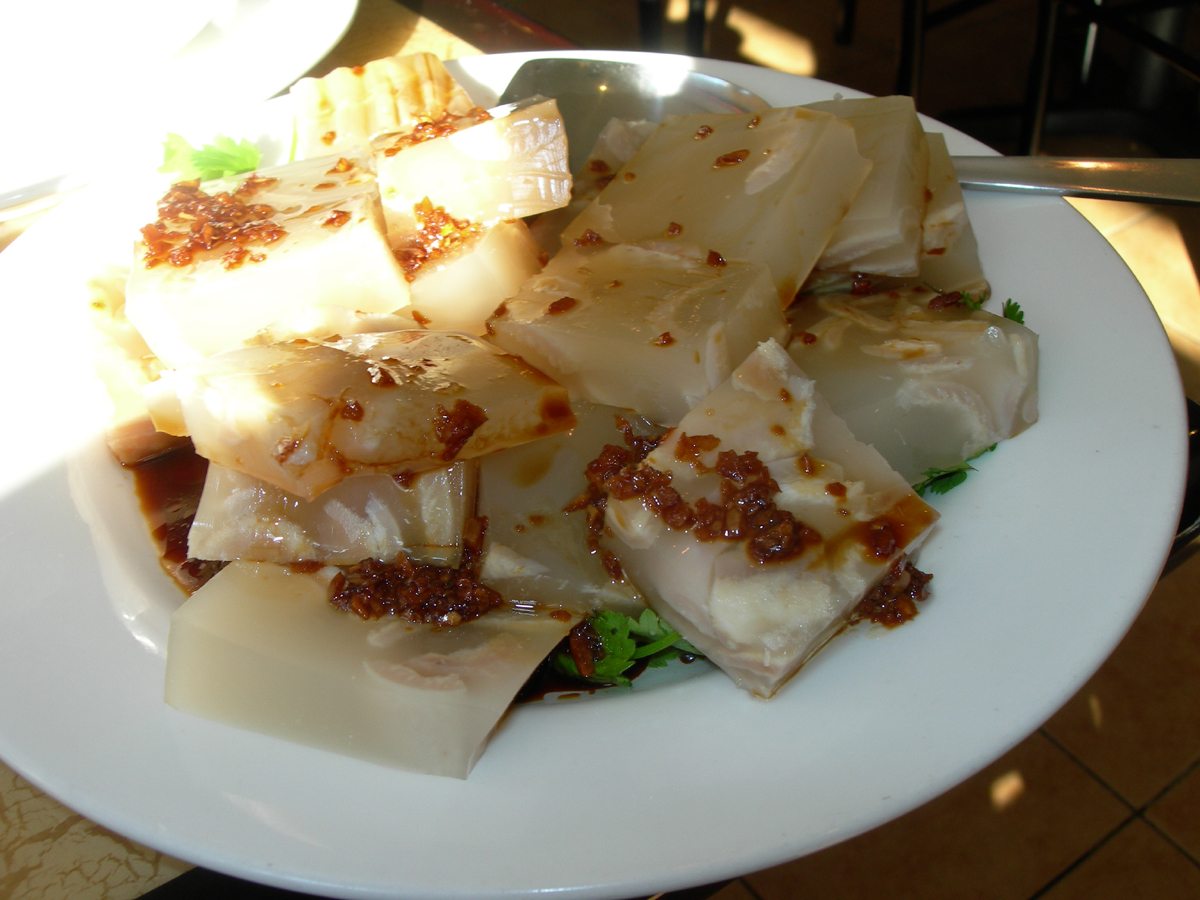 The people in this region eat lots of meat, potatoes, and bread. They accompany them with salty sauces and a few sweet and sour ones. They like chilies to enhance the piquancy of their foods. They like foods of the seas and the rivers; and they are plentiful; and the like corn cakes called cookies with their fish dishes. Dongbei people eat crabs by the bushel and many land and sea foods shipped from many different places.
The people in this region eat lots of meat, potatoes, and bread. They accompany them with salty sauces and a few sweet and sour ones. They like chilies to enhance the piquancy of their foods. They like foods of the seas and the rivers; and they are plentiful; and the like corn cakes called cookies with their fish dishes. Dongbei people eat crabs by the bushel and many land and sea foods shipped from many different places.
Chunks of meat and ground meats of all kinds are popular be they lamb, goat, sheep, deer, even donkey. Some are braised with carrots, potatoes, and mushrooms, others barbecued or grilled; and they can be prepared with hot peppers and cumin. The foods here are served differently than from other places in China. They like their pieces of meat large or pre-cut and pre-cooked when small. They eat many organ meats, and their restaurants have them available at all times.
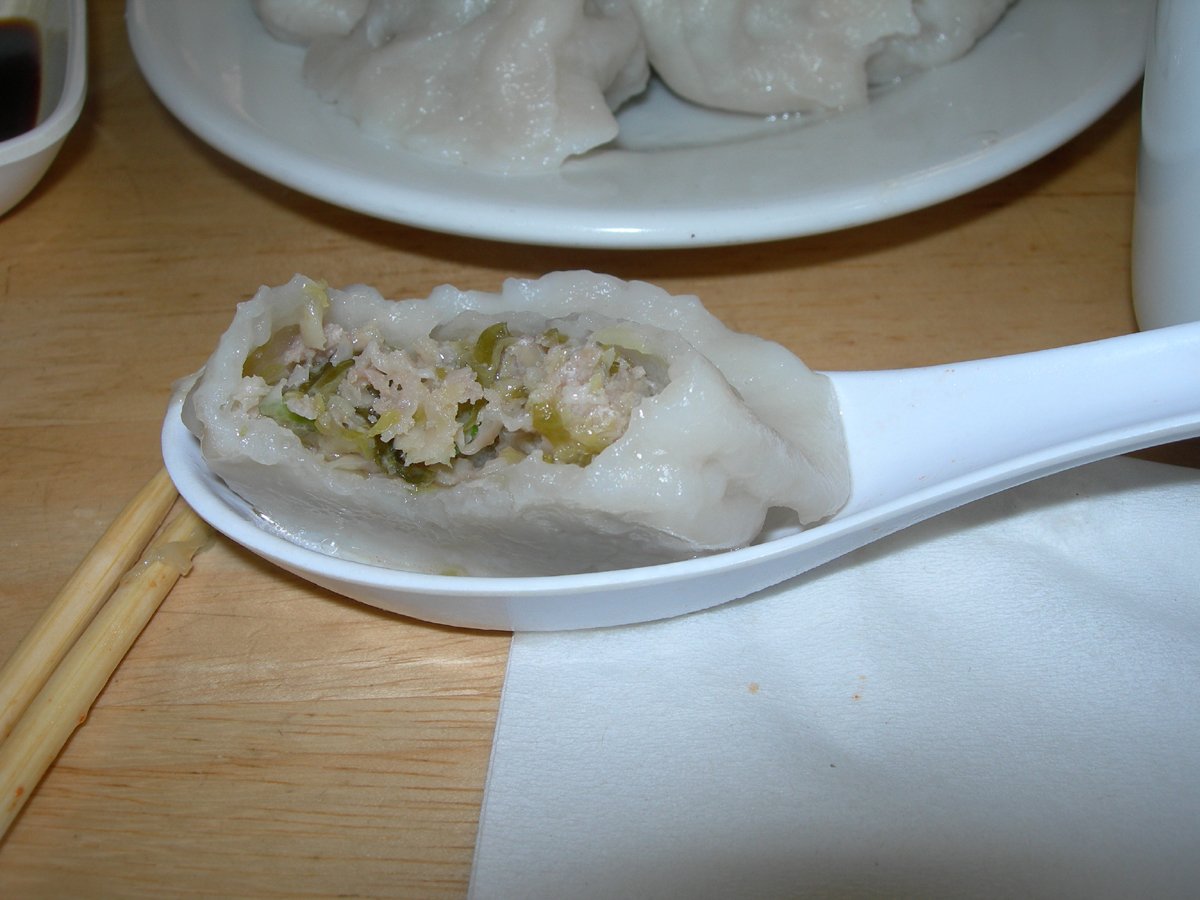 Were these things not enough to distinguish this cuisine, Dongbei cuisine is known for its many dumplings. Most are made from wheat flour dough, a few use mung bean or corn flour doughs. They like their dumplings filled with sour vegetables (particularly cabbage) and scrambled eggs, with chives and donkey meat, even with fried tofu mixed with chili peppers or leeks. No matter the filling, some are made with added corn meal, and all are served with sesame seed paste, chili oil, soy sauce, and super-sour vinegar. At meals they accompany these foods and others with tea and/or alcoholic beverages made from corn or potatoes, and other alcoholic drinks made from various grains.
Were these things not enough to distinguish this cuisine, Dongbei cuisine is known for its many dumplings. Most are made from wheat flour dough, a few use mung bean or corn flour doughs. They like their dumplings filled with sour vegetables (particularly cabbage) and scrambled eggs, with chives and donkey meat, even with fried tofu mixed with chili peppers or leeks. No matter the filling, some are made with added corn meal, and all are served with sesame seed paste, chili oil, soy sauce, and super-sour vinegar. At meals they accompany these foods and others with tea and/or alcoholic beverages made from corn or potatoes, and other alcoholic drinks made from various grains.
There are other delicacies unique to China's northeast that are considered special in this region. Silkworms come to mind as does game from the many nearby forested areas. People here adore foods pickled be they meat or vegetable; and of course they adore foods prepared with few or many herbs found at the edges of or deep in their forests.
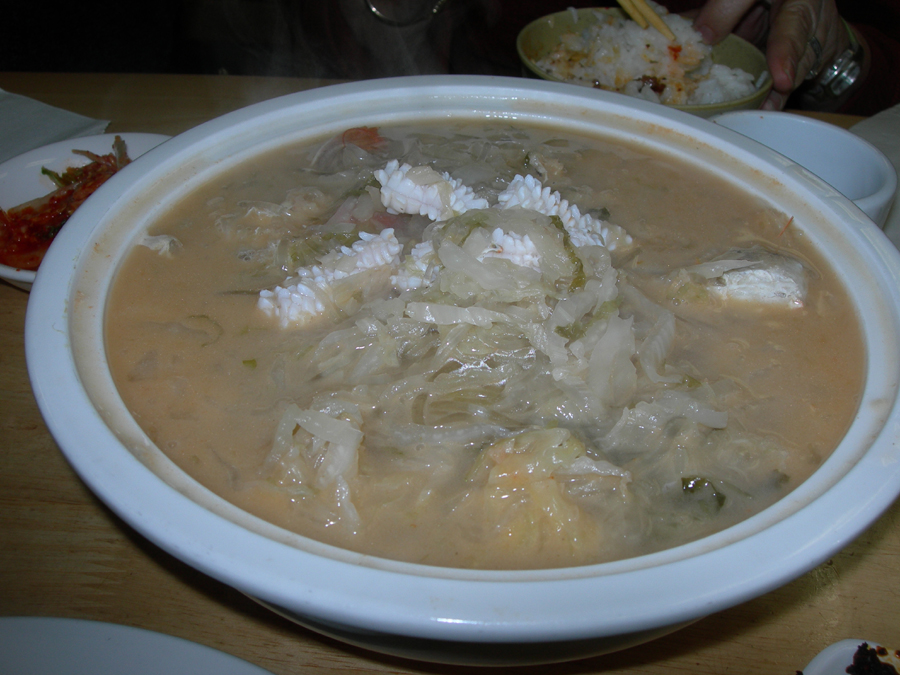 No longer is it necessary to travel to what was once called Manchuria to taste Dongbei dishes. There are restaurants in Beijing, Shanghai, Hainan Island, and in many large Chinese cities, and there are eateries opening in Chinatown in New York, and in the Flushing section of Queens. You can read about one chain of Dongbei restaurants, in the Wang and Abelman article on page in this issue, and about the two Dongbei eateries in the 'Dongbei in Flushing' in it, as well.
No longer is it necessary to travel to what was once called Manchuria to taste Dongbei dishes. There are restaurants in Beijing, Shanghai, Hainan Island, and in many large Chinese cities, and there are eateries opening in Chinatown in New York, and in the Flushing section of Queens. You can read about one chain of Dongbei restaurants, in the Wang and Abelman article on page in this issue, and about the two Dongbei eateries in the 'Dongbei in Flushing' in it, as well.
China's Dongbei eateries began with one on Hainan Island circa 1993. That restaurant is now a group of restaurants and in many cities throughout China. Their customers tout their fresh crabs from Dalian, river fish from Dandon, bread and mushroom dishes from Harbin, and silkworm cookery from the countryside.
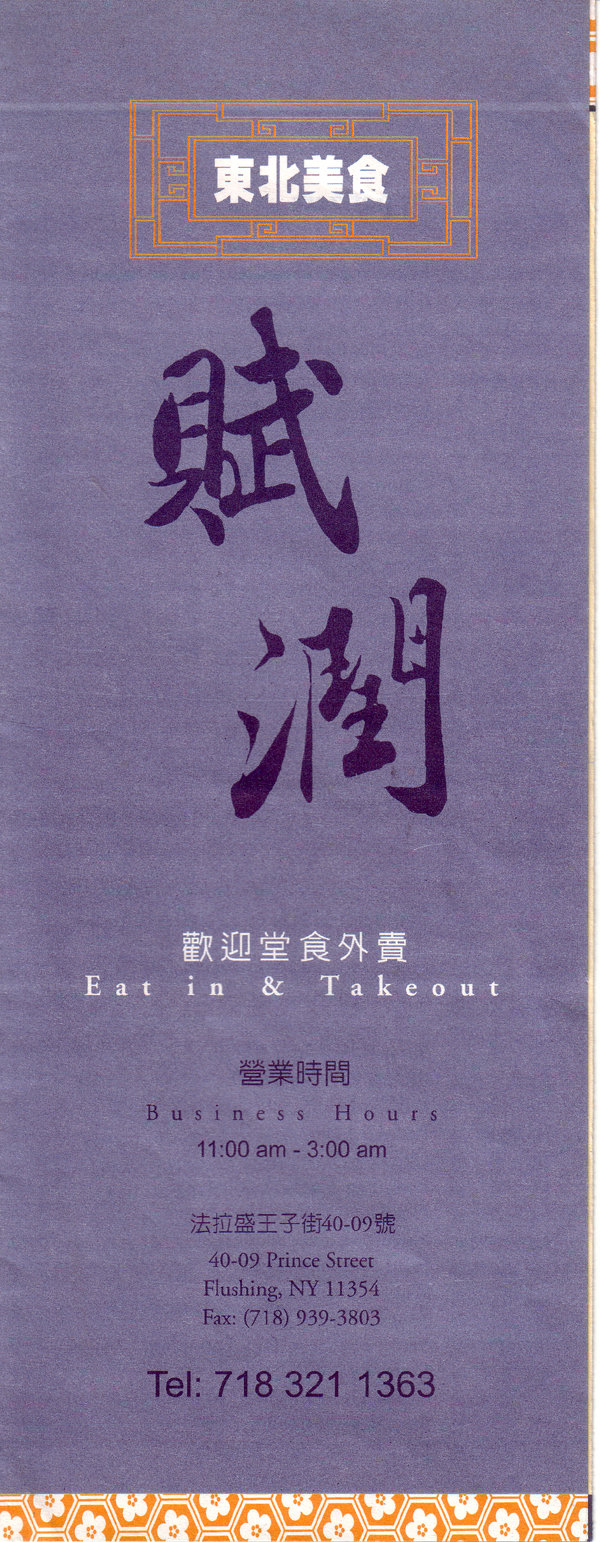 Not able to get to China, visit the Waterfront International, as it is known in English. The Chinese call, visit, and know it as Dongbei Fu Ren; 40-09 Price Street; Flushing NY; phone: (718) 321-1361. The chef here is from Dalian. Another Dongbei eatery was called the Golden Palace Restaurant but now is renamed LIAONING RESTAURANT; 140-09 Cherry Avenue; Flushing NY 11355; phone: (718) 886-4383. The chef here is from Liaoning. Both are discussed in this issue; check them out in the 'restaurant reviews' section on this web site.
Not able to get to China, visit the Waterfront International, as it is known in English. The Chinese call, visit, and know it as Dongbei Fu Ren; 40-09 Price Street; Flushing NY; phone: (718) 321-1361. The chef here is from Dalian. Another Dongbei eatery was called the Golden Palace Restaurant but now is renamed LIAONING RESTAURANT; 140-09 Cherry Avenue; Flushing NY 11355; phone: (718) 886-4383. The chef here is from Liaoning. Both are discussed in this issue; check them out in the 'restaurant reviews' section on this web site.
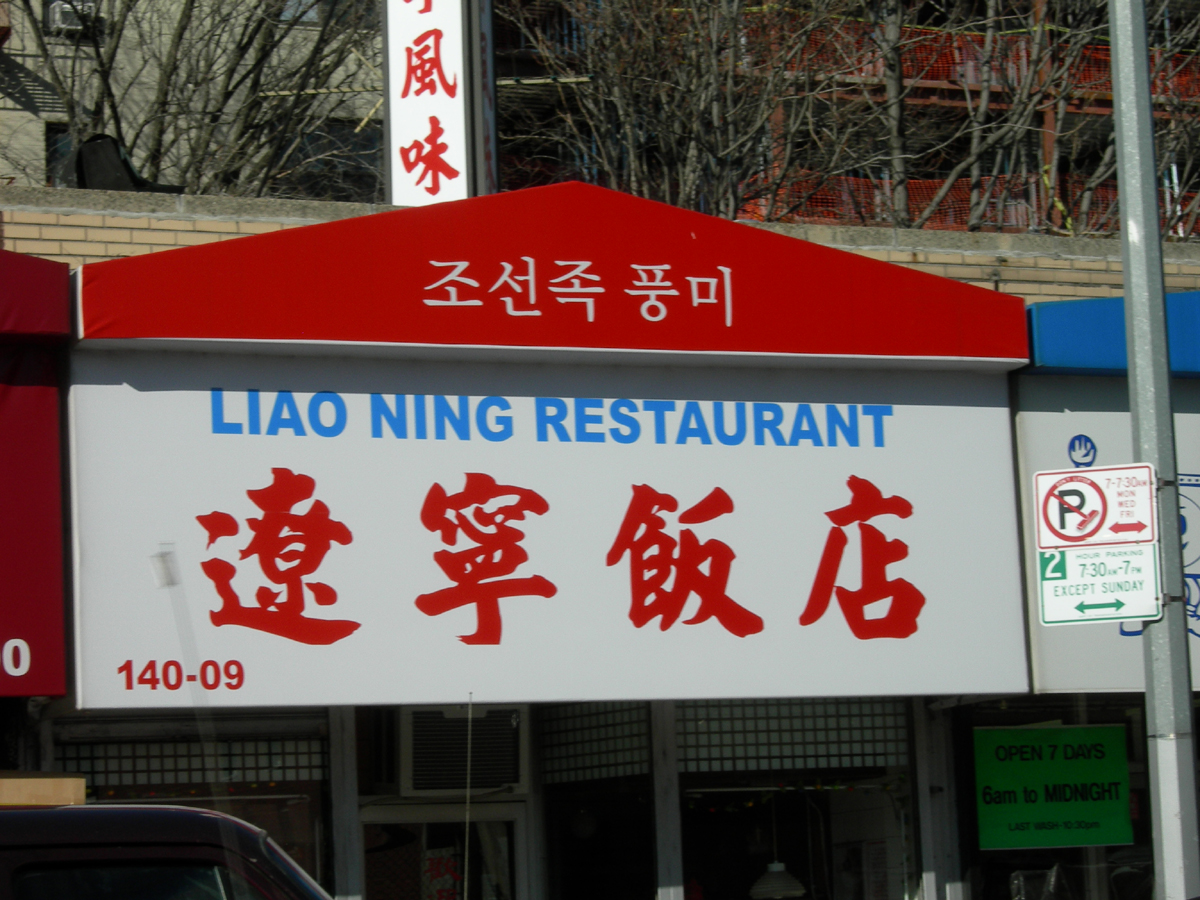 Additional information about foods from this region can be found on the web. Rarely are there recipes in English-language Chinese cookery books. On this page are some pictures from: www.flickr.com/photos and http://masak-masak.blogspot.com and there are a few recipes worked out by this magazine's editor after eating these foods at one or both of these restaurants. Do try them to become familiar with Dongbei tastes; you will be glad that you did.
Additional information about foods from this region can be found on the web. Rarely are there recipes in English-language Chinese cookery books. On this page are some pictures from: www.flickr.com/photos and http://masak-masak.blogspot.com and there are a few recipes worked out by this magazine's editor after eating these foods at one or both of these restaurants. Do try them to become familiar with Dongbei tastes; you will be glad that you did.
| Dongbei Sour Cabbage Dumplings |
|---|
1 cup canned or fresh pickled cabbage (sauerkraut), rinsed for two minutes under cold running water 1/4 cup minced lamb 1 scallion, white part only 1 slice fresh ginger, peeled and minced 1/2 teaspoon rice wine 1 cup flour 1/2 teaspoon salt Preparation: 1. Coarsely mince the pickled sour cabbage, then mix it with the lamb, scallion, and rice wine. 2. Mix flour with half cup water, and add more by the tablespoon until a firm dough is formed. Slap this against a hard surface a few time, then divide the dough into ten pieces and roll each one out until a five-inch circle. Repeat until all are rolled out. 3. Divide the cabbage mixture into ten parts, and put one tenth on each circle, wet the edges, fold in half, and pinch them together with two or three pleats. 4. Cook these dumplings in five or six cups of salted boiling water for five minutes, add a cup of cold water, and when they rise to the top, remove with a slotted spoon. Serve alone or with a dip of half soy sauce and half Chinese black vinegar. |
| Corn Buns |
|---|
1 cup yellow corn meal 1 cup five-grain flour (wheat, rice, mung bean, barley, and taro) 1 Tablespoon yeast 1/2 teaspoon salt Preparation: 1. Mix all the flours with the yeast and the salt. Add six tablespoons of water to form a dough, then add additional tablespoons of water, if needed, until the dough is firm and holds together. 2. Divide the dough into ten parts, and shape each into a round, then pull out the top to bring it to a point. 3. Steam over rapidly boiling water for fifteen minutes, remove, and serve. |
| Shredded Sour Potatoes |
|---|
1 large potato, shredded then soaked in ice water 1 scallion, green part only, shredded 1 chili pepper, seeds removed, and shredded 2 Tablespoons red Chinese rice vinegar 1/2 teaspoon salt 1 Tablespoon white Chinese rice wine 1 Tablespoon vegetable oil Preparation: 1. Drop potatoes in three cups of boiling water, and after one minute, drain and put into a bowl. 2. Mix scallion and chili pepper shreds with the potatoes, then add the vinegar, salt, and rice wine and stir well. 3. Heat wok or fry pan, add oil, and then add potato mixture, being careful as it will splatter. Stir-fry for one minute, remove to a serving brown and serve hot, warm, or at room temperature. |
| Lamb Hot Pot I |
|---|
1/2 pound lean lamb, frozen, thinly sliced, each slice rolled loosely 1/2 napa cabbage, cut into one-inch pieces 1/4 cup seeded and sliced chili peppers 1 piece (about half pound) firm tofu, cut into one-inch cubes 1 cup spinach, other dark greens, or pieces of baby bok choy 4 cups chicken stock 2 teaspoons sesame oil 1/4 cup commercially bottled leek sauce (available in Asian supermarkets) 1/4 cup black vinegar 1/4 cup dark soy sauce Preparation: 1. Arrange meat slices, napa leaves, chili peppers, tofu, and spinach on one or two serving plates. 2. Heat chicken stock and sesame oil in a casserole or hot pot that can go heat source on a dining room table. 3. Put leek sauce, vinegar, and soy sauce into separate tiny saucers. 4. Provide each diner with a small stainer basket, a soup spoon, a soup bowl, and a pair of chop sticks. 5. Each diner makes a personal sauce mixture in their soup bowl using as much as they wish of the leek sauce, vinegar, and soy sauce. They then put a slice of lamb in the stainer basket and lower it into the hot soup to cook to their desired doneness. They do the same with more meat, cabbage, chili peppers, tofu, and spinach, one or two pieces at a time, also cooked to the doneness preferred . After each item is cooked, they drain it and put it in their soup bowl. Taking their chop sticks, they remove it from the sauce an eat it. The go on to cook the next item of choice. 6. When they have had enough solid food, they put some soup from the casserole into their own soup bowl, mix it with any remaining sauces in that bowl, and use their soup spoon to consume this soup mixture. |

Copyright © 1994-2025 by ISACC, all rights reserved
Address
3 Jefferson Ferry Drive
S. Setauket NY 11720